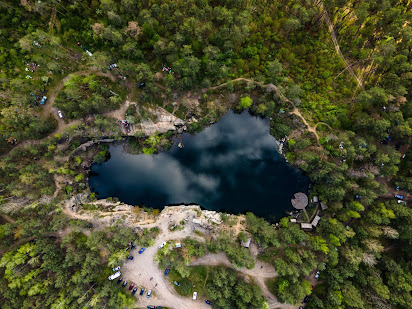Protected areas are an essential component of conservation and climate change reduction. However, protected areas are not always as effective as they could be, this has previously been seen to correspond to gross domestic product (GDP), specifically where forested protected areas are concerned. The paper by Wolf et al (2021) aims to analyse the effectiveness of protected areas with regards to limiting forest loss.
They found that protected areas did reduce forest loss, but did not eliminate it completely. Those with the strictest management showed less deforestation than those with little to no management. The creation of new protected areas did see a slight increase in deforestation both within the protected area and in near by unprotected woodland.
Results show that protected areas within South Africa were the most effective in preventing forest loss. Protected areas with lower deforestation are expected to have other benefits, such as lower species loss, whether due to greater habitat availability or effective suppression of illegal hunting. As well as protecting biodiversity, protected areas also protect the immense carbon sink that is our forests. Deforestation not only stops this sink, but depending on the use of the wood, can also release the carbon back into the atmosphere. Reducing or preventing deforestation through protected areas is essential to tackle climate change.
Once again GDP was demonstrated to have a significant influence on the effectiveness of protected areas. The authors suggest that, to help maintain and improve protected areas, countries of higher GDP should assist those with lower GDP. This will aid actions such as species recovery/reintroduction as the acts can be done sooner rather than waiting for the GDP to increase to a point they can act themselves, by which point the species may be beyond saving, or be incapable of reintroduction.
Aichi Target 11: By 2020, at least 17 per cent of terrestrial and inland water, and 10 per cent of coastal and marine areas, with a focus on areas particularly important for biodiversity and ecosystem services. Areas are conserved through effective and equitable management as well as being ecologically representitive. Areas must also be well connected whilst merging seamlessly with the surrounding land and seascapes and coordinating with other conservation measures.
The Aichi Target was due for 2020, but the authors found that when corrected for with deforestation (effectiveness), current protected area was only around 6.5%. Again correcting for deforestation, or effectiveness, the authors find that the actual percentage of protected land needed is 41.3%. Clearly this target has not been met. Hope should not be lost, it is a goal that should be sought no matter how long it takes, but this should not lead us into complacency. Thinking that if met in 2050 it is fine too, no, the sooner the better.





No comments:
Post a Comment